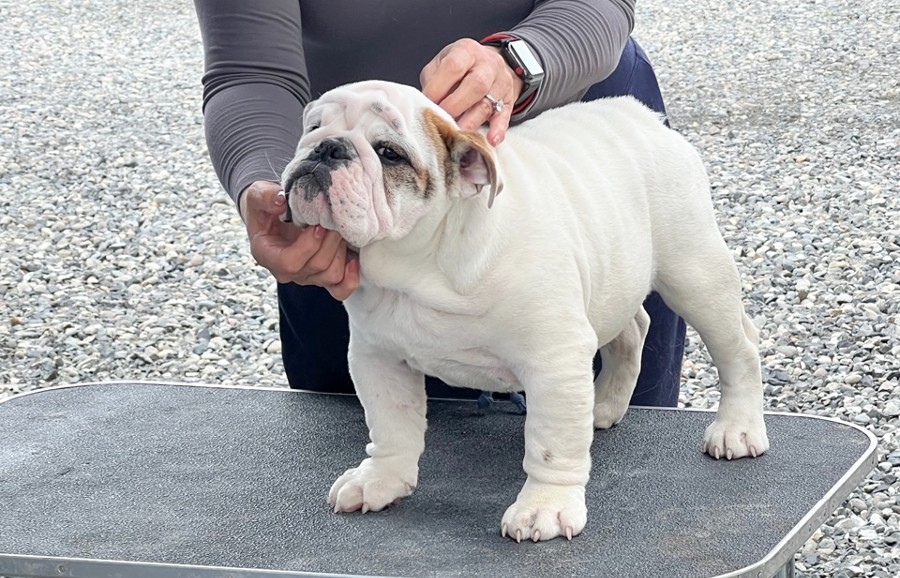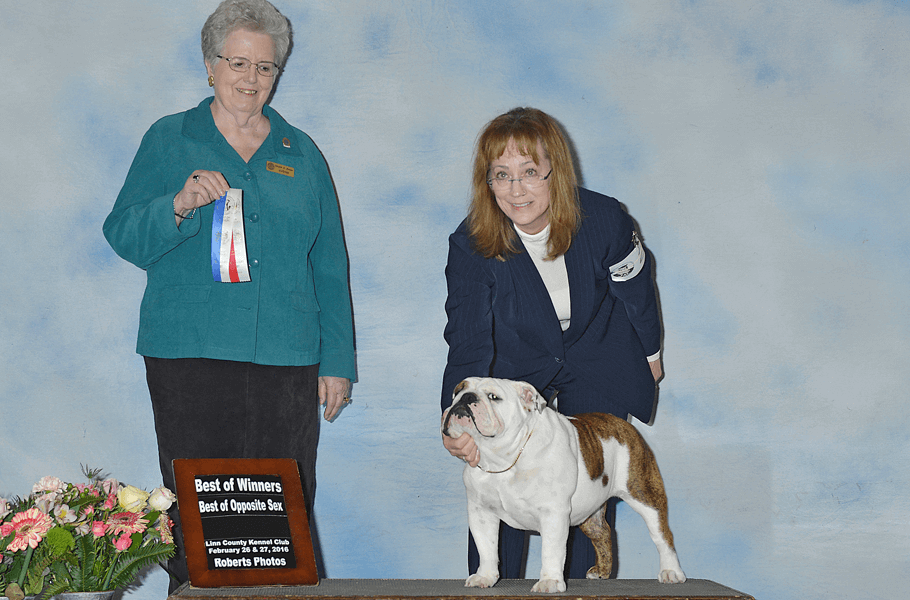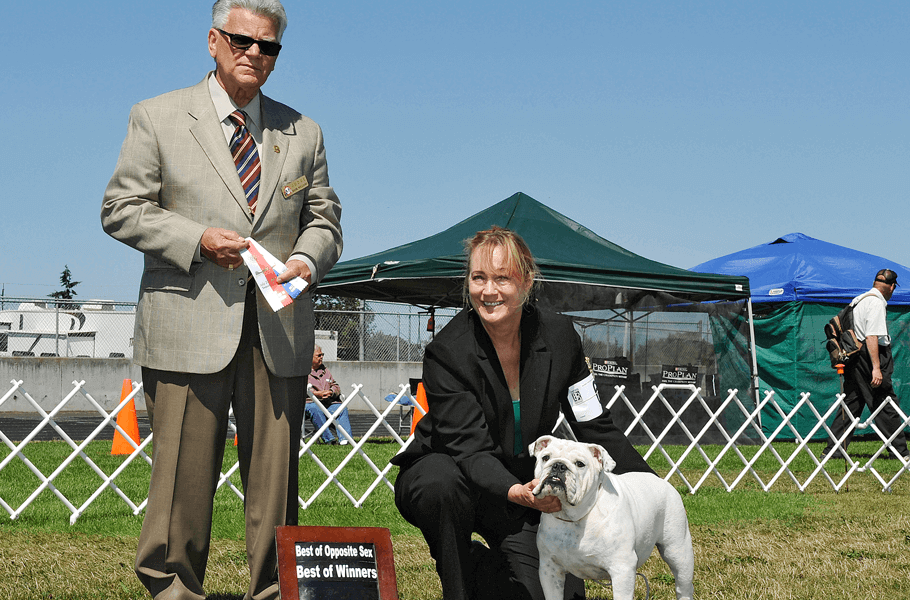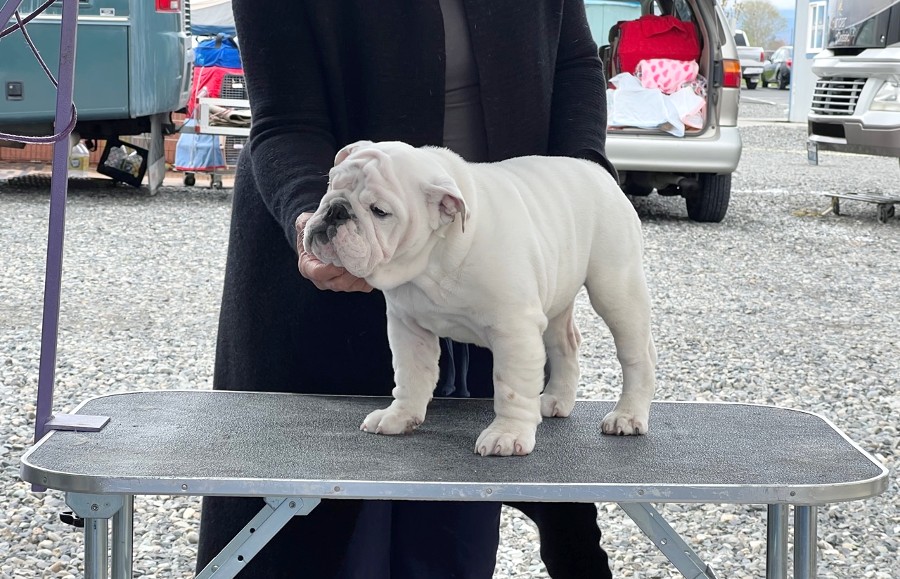How to Enter Your Dog into a Dog Show: The Complete Guide
How to Enter Your Dog into a Dog Show: The Complete Guide
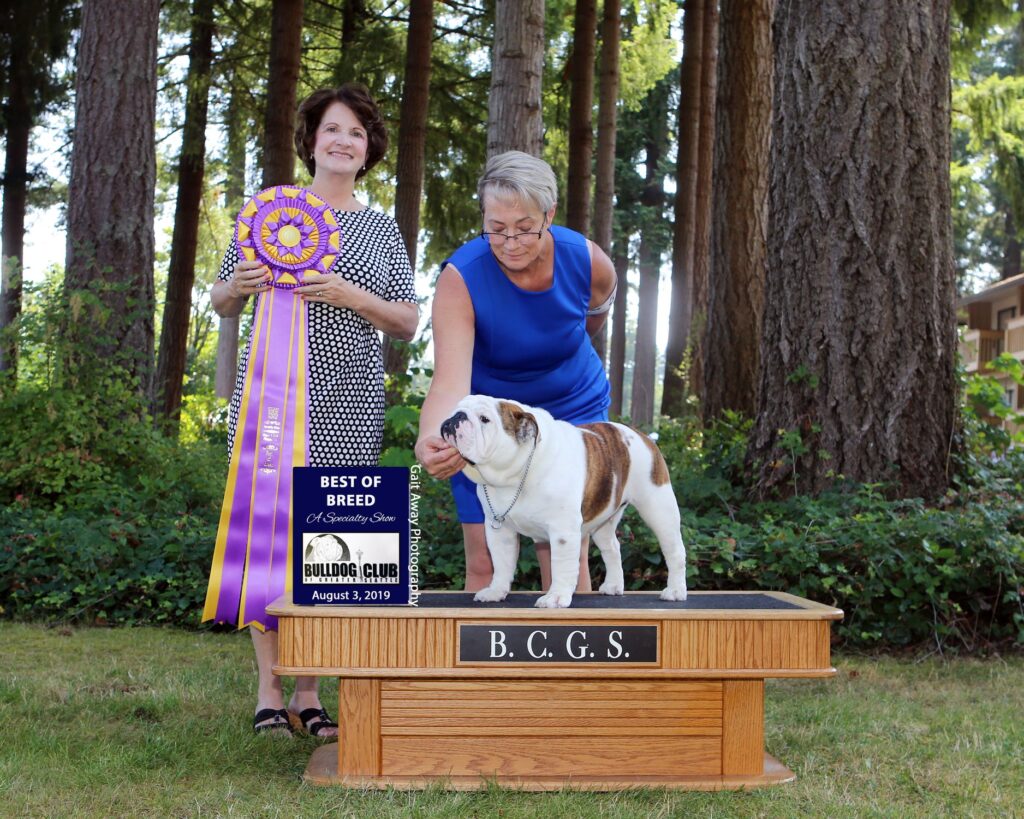
If you’re like a lot of dog lovers we meet, you’ve probably watched the Westminster Kennel Club Dog Show and thought: “Hey, that looks fun.” And maybe you’ve even thought that might look like something you’d want to do one day yourself. Afterall, you have a handsome dog. And he’s pretty well trained. He’d do great in a dog show, right?
Maybe.
While most dogs can become well-behaved pets with the right love, training, and attention, it takes a specifically bred dog to excel in dog shows. For show dogs, breeding is everything. Your dog may have the most adorable personality and the friendliest smile, but if he doesn’t closely match the breed standard (i.e., if his ears are slightly too long or his head is too narrow, etc.), he won’t place well in any show, let alone a prestigious one like Westminster.
But if you’re confident your pooch has the precise look judges want, go for it! Dog shows are a lot of fun. And participating in one can feel like belonging to a secret club. You may be competing against one another, but there’s a real feeling of camaraderie in dog shows that you won’t find anywhere else.
Before we delve into the types of dog shows and the details on how to get started in dog shows, let’s first review how they got started in the first place.
The History of Dog Shows in the US
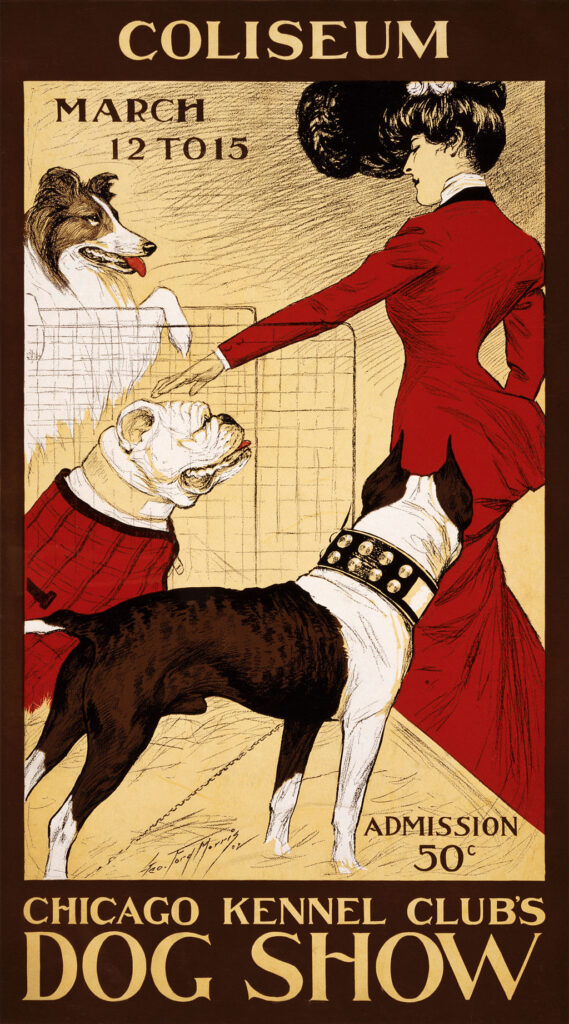
An advertising poster for the Chicago Kennel Club’s Dog Show, circa 1902.
The first dog shows were held in England in the 1850s, when they were included as side attractions in cattle shows. While the first official dog show was launched in Newcastle, England, in 1859, the first dog show in the US occurred only a few years later, in New York in 1863. In 1877, the first formal dog show was held in the US by the Westminster Kennel Club.
In 1878, the American Kennel Club (AKC) was formed, and nine breeds of dogs were recognized, which included the Chesapeake Bay Retriever, English Setter, Gordon Setter, and several breeds of spaniel. Most of these first charter breeds were hunting dogs because they were the most sought after breed of the time.
Bulldogs first became eligible for registration by the AKC in 1886 and French bulldogs in 1898.
Today, the American Kennel Club recognizes 200 breeds and represents the largest registry of purebred dogs on the planet.
The 3 Types of Dog Shows
Most official dog shows in the US are organized around a set of rules maintained by the American Kennel Club (AKC), which is the largest not-for-profit purebred dog registry in America.
Over 22,000 AKC-licensed dog shows are hosted in the US every year. To compete in an AKC-sanctioned show, you must register your dog with the American Kennel Club to ensure your dog is purebred and can demonstrate a healthy genetic line.
Below is an overview of the most common types of dogs shows:
1. All-breed shows
If you’ve seen a dog show on television before, it was likely an all-breed show. Like the name suggests, an all-breed show is open to all AKC-recognized breeds that meet show qualifications (the dog must be six months or older, must be registered with the AKC, etc.).
2. Specialty shows
Specialty shows only feature one breed of dog (or, in some cases, a few varieties of a specific breed). For example, the Poodle Club of America specialty show includes three breeds of Poodle (Standard, Miniature, and Toy). In the Bulldog Club of America speciality show, on the other hand, only Bulldogs (or “English bulldogs,” as the general public sometimes calls them) can compete—French bulldogs must compete in their own show.
3. Performance shows
All-breed and specialty shows are conformation shows, and therefore focus solely on how well a particular dog conforms to their breed in structure or movement. A performance show, on the other hand, judges dogs based on how well they perform certain abilities, such as agility and obedience.
Some performance shows are open to all breeds, while others focus on a single breed and that breed’s innate talents. For example, basset hound performance shows test basset hounds on their scenting skills, a dachshund performance show might test a dachshund’s ability to locate prey underground, and a performance event for a herding class of dog, like a border collie, would test the herding dog’s ability to move sheep around a field or enclosure.
How to Get Started in Dog Shows
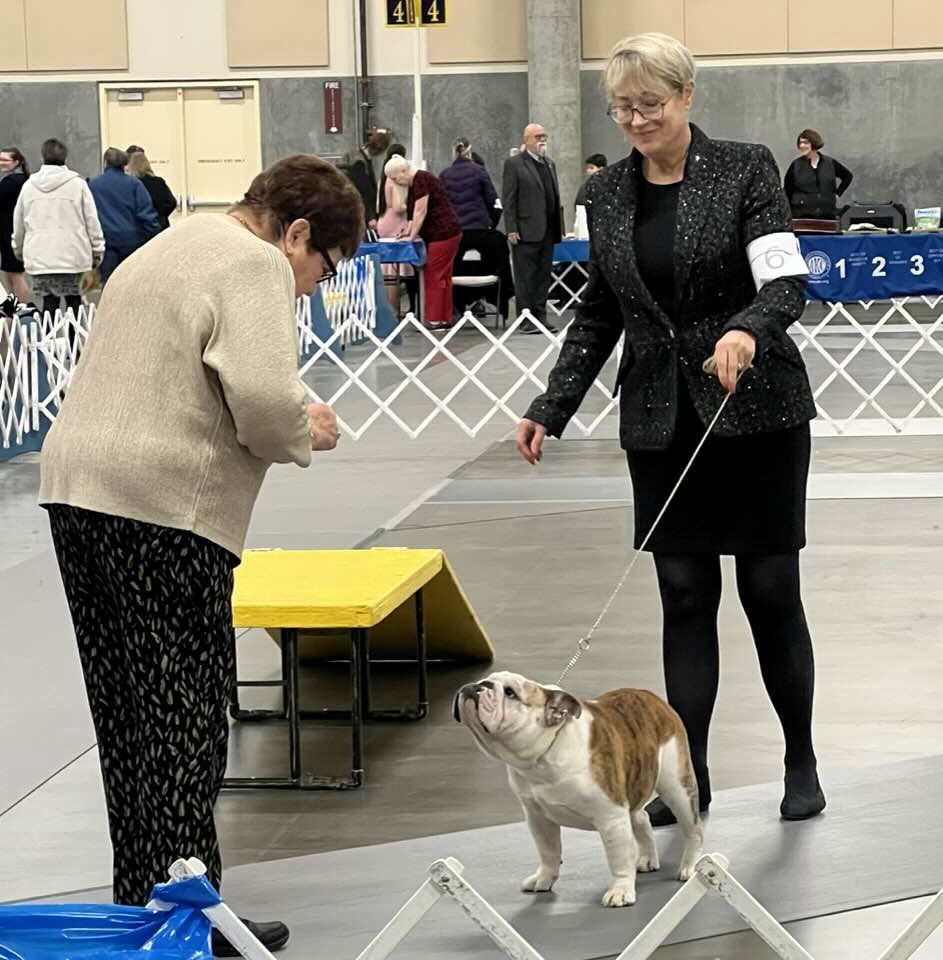
So now that you’re familiar with the types of dog shows, you may be wondering how to enter your dog into a dog show or how to get started in dog shows. Read on to discover all the details.
- Learn the Lingo
Before getting started in dog shows, you’ll want to learn the correct terminology. For example, for most dog shows, a dog show isn’t actually called a dog show! The official term is “conformation.” And the word “dog” actually only refers to male canines. For female canines, the correct term to use is “bitch.”
When you’re first starting out, learning what may seem like a foreign language can feel overwhelming, but don’t worry. Once you read through the materials provided by the AKC (American Kennel Club, another important term!), you’ll slowly get the hang of it.
We’ve compiled all the most common dog show lingo into a detailed guide: Dog Show Terminology: 20 Terms You Should Know Before Entering a Dog Show.
It’s important to learn the proper terminology because knowing the vocabulary will not only help you understand the showing process, but it’ll also ensure you don’t stand out as a complete novice at your first show.
- Double Check Your Dog is Eligible
The last thing you want to do is become an expert at dog shows, only to discover late in the process that your dog does not meet the criteria to compete.
Only purebred dogs are eligible to compete in conformation shows. Mixed breeds, as well as spayed or neutered dogs, are ineligible.
Your dog will also be disqualified if it’s discovered that he or she has undergone a surgical procedure to enhance their appearance in order to better conform to the breed standard.
In order to compete, your dog must also:
- Be six months or older
- Be registered with the AKC
- Have up-to-date vaccinations
- Be in good health
Read the AKC Dog Show Rules for a full list of requirements and regulations.
- Study the Process
Before you enter your dog into a dog show, you’ll want to understand what a dog show is and what it isn’t.
A dog show may look similar to a beauty pageant, but unlike the Miss America pageant, judges aren’t comparing the contestants in a dog show with one another, but rather against each dog’s specific breed standard.
For a crash course on everything you need to know about dog showing, we recommend reading the AKC’s free ebook: A Beginner’s Guide to Dog Shows.
But here is a general overview.
Dog Show Classes
American Kennel Club conformation shows offer seven classes for dogs to compete in. Each class is divided by gender, so males (dogs) in the novice class, for example, will compete against other males in the novice class while the females (bitches) in a novice class compete against one another in a separate competition.
After each of the class winners have been declared, all the dogs that won first place in their class will compete again for the title “Winners Dog” (for males) or “Winners Bitch” (for females).
If your dog is a puppy (i.e., under 12 months old), you’ll have the option of entering them into the “Puppy Class.”
If your dog is older than a puppy, or if you’re looking to compete in other classes, you could consider one of these classes:
- 12-18 Month
- Novice
- Amateur-Owner-Handled
- Bred-By-Exhibitor
- American-bred
- Open
For a full explanation of what each of these classes entaisl, read the AKC guide to Conformation Dog Show Classes.
- Learn How Judging Works
Judges evaluate each dog by the criteria detailed in the official written standard for each dog’s specific breed, which is managed and updated by the breed’s national club.
A standard includes guidelines breed:
- Structure
- Temperament
- Movement
As previously mentioned, judges don’t care how adorable your dog is—they only care how well your dog conforms to the standard for their breed.
This can be somewhat of a subjective process. While all judges are experts in the breeds they judge, they are also each judging based on their own “mental image” of what the ideal version of the breed should look or act like. This can differ slightly person to person.
A bulldog dog show (called a specialty show, because it features just one breed), for example, will often have several bulldogs that conform closely to the breed standard—and the differences can be so subtle, they’re nearly indistinguishable to the untrained eye. Dog shows can be quite competitive, but that is also what can make them exciting to watch and participate in.
During the judging process, judges inspect each dog, using their hands to go over the dog to examine the muscles, bones, and coat texture. They even inspect the dog’s teeth. They’ll also look at each dog from multiple angles and observe each dog’s gait (the way they move) before deciding on a winner.
- Join a Local Kennel Club or Specialty Club
While you can find a lot of information online (including in our blog and on the AKC website), sometimes the easiest way to learn how to get started in dog shows is to talk with the experts in your area. You’ll meet dog show champions when you join an all-breed kennel club or a breed-specific specialty club.
Local clubs can also point you toward quality training classes that can help prepare you and your dog for the show ring.
Visit the AKC website to find a local chapter in your area.
- Enroll your Dog in Training Classes
Of course, you can learn to train a dog yourself, but it might be easier to take a class if you’re just starting out. When you’re new to dog showing, dog training classes can be just as much about training you how to behave in a ring as it is about training your dog.
Some of the skills your dog will learn in a show training class are:
- Gaiting—Your dog will need to know how to move properly around the ring so that the judge can readily observe the dog’s gait and structure. Gaiting usually involves trotting with the head held up.
- Stacking—Your dog must be able to stand squarely while keeping still. Called “stacking”, this is the position your dog will assume during the judge’s examination.
- Backing up—Your dog should be able to back up on command.
- Tolerating being touched—Your dog will need to be comfortable being handled by strangers during the judging process. This is critical, because if your dog behaves aggressively during a dog show, he or she will be disqualified immediately.
- Attend a Dog Show in Person
Perhaps the best thing you can do to prepare for entering your dog into a dog show is to attend one as a spectator! You’ll get to watch the entire process from start to finish and can see first hand everything you’ll need to do when it comes time for you and your pooch to step into the ring. This will give you a crash course into the world of dog shows and can prove to be the most effective way to familiarize yourself with everything you’ll need to know.
The best part? You can attend most dog shows for free.
Search the AKC website’s database to find a dog show near you.
If you’ve found this blog helpful, we invite you to please follow Cascade Bulldogs on social media. You can follow us on Facebook, Instagram, and Pinterest for more dog show tips and for updates from our bulldogs. Our brood of bulldogs regularly compete in top shows across the country.
See you in the ring!






